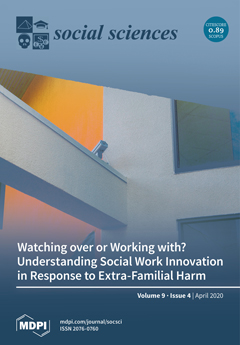Open AccessFeature PaperArticle
Minority Stress and Mental Health in Italian Bisexual People
by
Cristiano Scandurra, Andrea Pennasilico, Concetta Esposito, Fabrizio Mezza, Roberto Vitelli, Vincenzo Bochicchio, Nelson Mauro Maldonato and Anna Lisa Amodeo
Cited by 35 | Viewed by 7658
Abstract
Bisexual people are a strongly stigmatized population experiencing health disparities caused by social stigmatization. The predominant framework helping to understand these health disparities and the impact of stigma on mental health of social groups belonging to a sexual minority identity constitutes the minority
[...] Read more.
Bisexual people are a strongly stigmatized population experiencing health disparities caused by social stigmatization. The predominant framework helping to understand these health disparities and the impact of stigma on mental health of social groups belonging to a sexual minority identity constitutes the minority stress theory. In Italy, studies assessing this model in bisexual populations are very limited. Within this framework, the current study aimed at assessing in 381 Italian bisexual individuals (62 men and 319 women) the effects of anti-bisexual discrimination, proximal stressors (i.e., anticipated binegativity, internalized binegativity, and outness), and resilience on psychological distress. The results suggested that only anti-bisexual discrimination and internalized binegativity were positively associated with psychological distress, and that resilience was negatively associated with mental health issues. Furthermore, the results suggested that internalized binegativity mediated the relationship between anti-bisexual discrimination and mental health problems. No moderating effect of resilience was found. This is the first study to have thoroughly applied minority stress in Italian bisexual people, providing Italian clinicians and researchers with an outline of the associations between minority stress, stigma, resilience, and psychological distress within this population.
Full article
►▼
Show Figures





